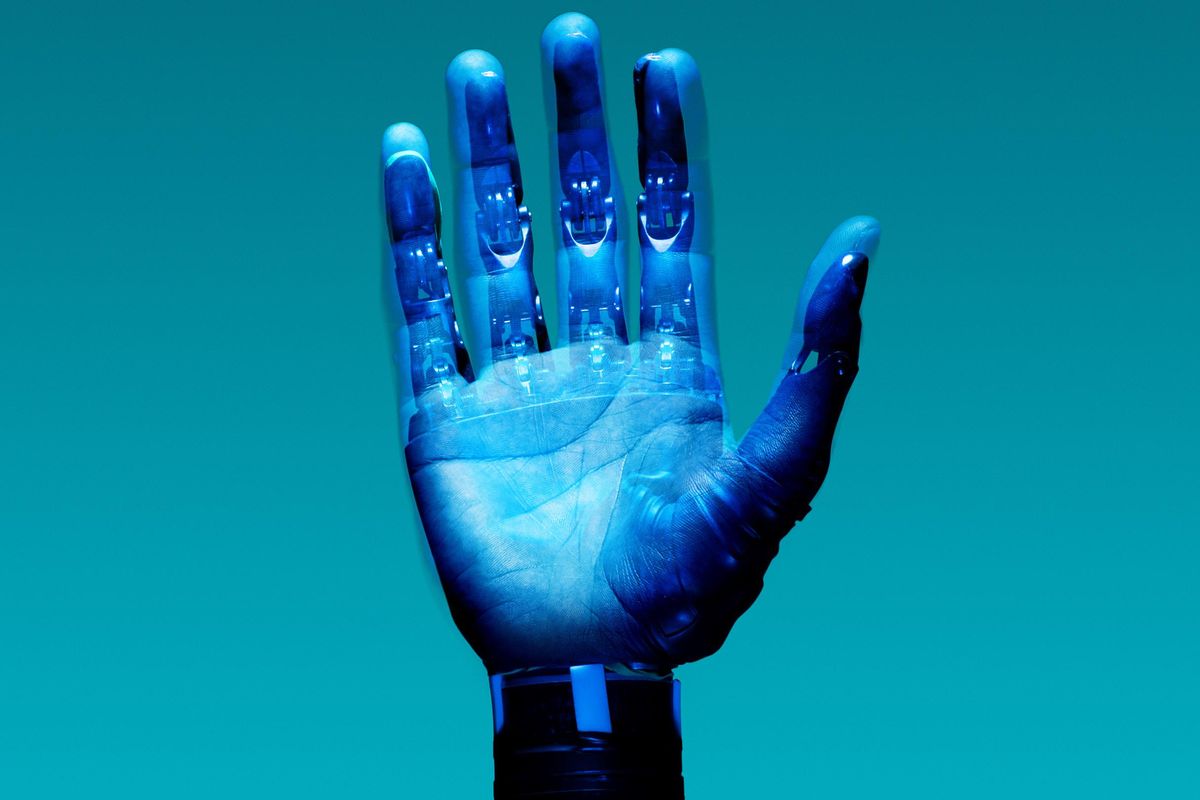
People had a wide variety of experiences during lockdown. Some created businesses, others learned a new skill and still others moved from one couch to another without spilling their plate of nachos. All worthy endeavors. Then there’s Benjamin Choi, a 17-year-old high school junior who decided to build a prosthetic arm that could be controlled by brain waves. Choi started the extensive project in 2020 at the age of 15 using his sister's 3D printer. The idea for the prosthetic arm came from a feature on "60 Minutes" about a mind-controlled prosthetic arm, but for the arm to work it required surgery to implant sensors on the motor cortex of the user's brain.
Choi told Smithsonian Magazine, “I was really, really amazed at the time because this technology was so impressive. But I was also alarmed that they require this really risky open brain surgery. And they're so inaccessible, costing in the hundreds of thousands of dollars.”
The teen’s goal was to make the robotic limb affordable, making it more accessible. He also wanted to eliminate the need for a surgery that involves digging around in someone’s brain to get the prosthesis to work. Using his sister’s 3D printer for his first prototype was time consuming and required tedious work to connect the pieces as the printer could only print pieces 4.7 inches long. It took Choi 30 hours just to print the parts of the arm before using rubber bands and bolts to put it together. The prosthetic worked using head gestures and brain wave data.
Amazingly, the prosthetic arm wasn't Choi's first go at coding. He has been participating in robotics competitions since he was in elementary school, requiring him to not only build robots, but code them so they would move the way he wanted. He’s gone to the VEX Robotics World Championships several times and in 9th grade he taught himself computer programming languages C++ and Python by watching videos on Stack Overflow.
For now, the arm is mounted on a stand. Over the past two years, Choi has been working to perfect the arm before adding a socket, which he says will require a recipient to be custom fitted. The arm is currently on its 75th iteration. Choi is still able to maintain the affordability of the prosthetic, with manufacturing costs of around $300. Presently, a basic body-powered upper body prosthesis will run you around $7,000.
Choi works with volunteers to collect data and improve the functionality of the AI arm. The high schooler still has a way to go before the arm is complete and ready to be put on the market but that hasn’t stopped him from being recognized. He has won awards in the Microsoft Imagine Cup, the Regeneron International Science and Engineering Fair and the National At-Home STEM Competition. He is also a recipient of a manufacturing grant from polySpectra Inc., awarded in 2020 to help with the production of the arm. polySpectra produces durable 3D material.
Choi plans to attend college to study engineering and wants to continue working on his prosthetic arm, eventually bringing it to clinical trials. If he pulls this off, it could be life changing for the 2 million people in the United States that live with the loss of a limb.
- Disabled animals are getting a second chance thanks to an amazing ... ›
- Woman removes prosthetic leg to prove she deserves handicapped ... ›
- This cute 5-year-old finally got to hug his brother after getting a Hulk ... ›
- Toddler insists she put on her own prosthetic - Upworthy ›
- Student wins spelling bee in intense lightning round - Upworthy ›
- 13-year-old accepted into medical school - Upworthy ›
- Man played saxophone throughout his brain surgery - Upworthy ›
- Man played saxophone throughout his brain surgery - Upworthy ›
- Amazing video shows 1950s mom of 7 without arms doing it all - Upworthy ›
- Emotional video shows a dad having one last cuddle with his son before an arm amputation - Upworthy ›




 Happy Girl GIF by RetMod
Happy Girl GIF by RetMod  Woman enjoying some self care time.
Woman enjoying some self care time.
 "You're hilariously brilliant at everything you hate."
"You're hilariously brilliant at everything you hate."  "Bridget is authentically herself…and triumphs in her own way."
"Bridget is authentically herself…and triumphs in her own way."  "They're written in some curious language that I can't really understand."
"They're written in some curious language that I can't really understand." 
 Woman in denim jacket covers face with sleeve, standing outdoors with blurred background.
Woman in denim jacket covers face with sleeve, standing outdoors with blurred background. Woman with outstretched arms in a sunlit field, enjoying the outdoors.
Woman with outstretched arms in a sunlit field, enjoying the outdoors. Lush forest with vibrant green and orange foliage in soft, misty sunlight.
Lush forest with vibrant green and orange foliage in soft, misty sunlight. Friends laughing and drinking coffee at a cozy cafe table.
Friends laughing and drinking coffee at a cozy cafe table. Woman with curly hair in sunlight, eyes closed, wearing a purple top.
Woman with curly hair in sunlight, eyes closed, wearing a purple top. Man smiling with hand over face, standing outdoors against a blue sky background.
Man smiling with hand over face, standing outdoors against a blue sky background. Hand painting a still life on canvas with blue and orange tones.
Hand painting a still life on canvas with blue and orange tones. Woman sitting on a chair in the water, writing in a notebook at sunset.
Woman sitting on a chair in the water, writing in a notebook at sunset.
 Wash the dishes before I get home from bowling! Photo by
Wash the dishes before I get home from bowling! Photo by  music video 80s GIF
music video 80s GIF 
 An embarrassed woman covers her face
An embarrassed woman covers her face A woman laughs while trying to hide her face from the cameraCanva
A woman laughs while trying to hide her face from the cameraCanva Green Flag GIF by The Last Talk Show
Green Flag GIF by The Last Talk Show A woman covers her faceCanva
A woman covers her faceCanva